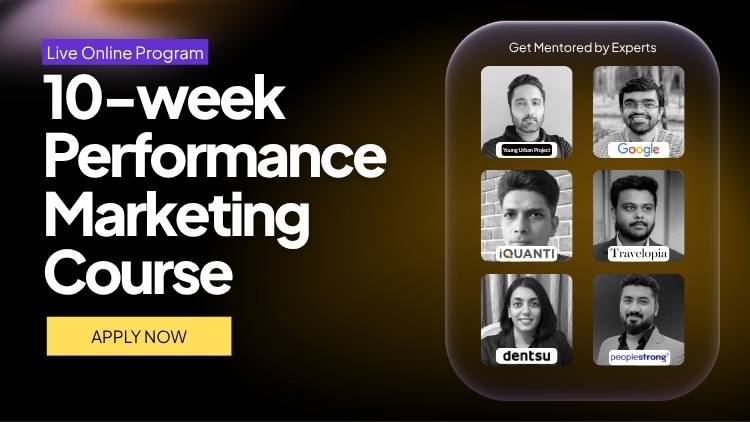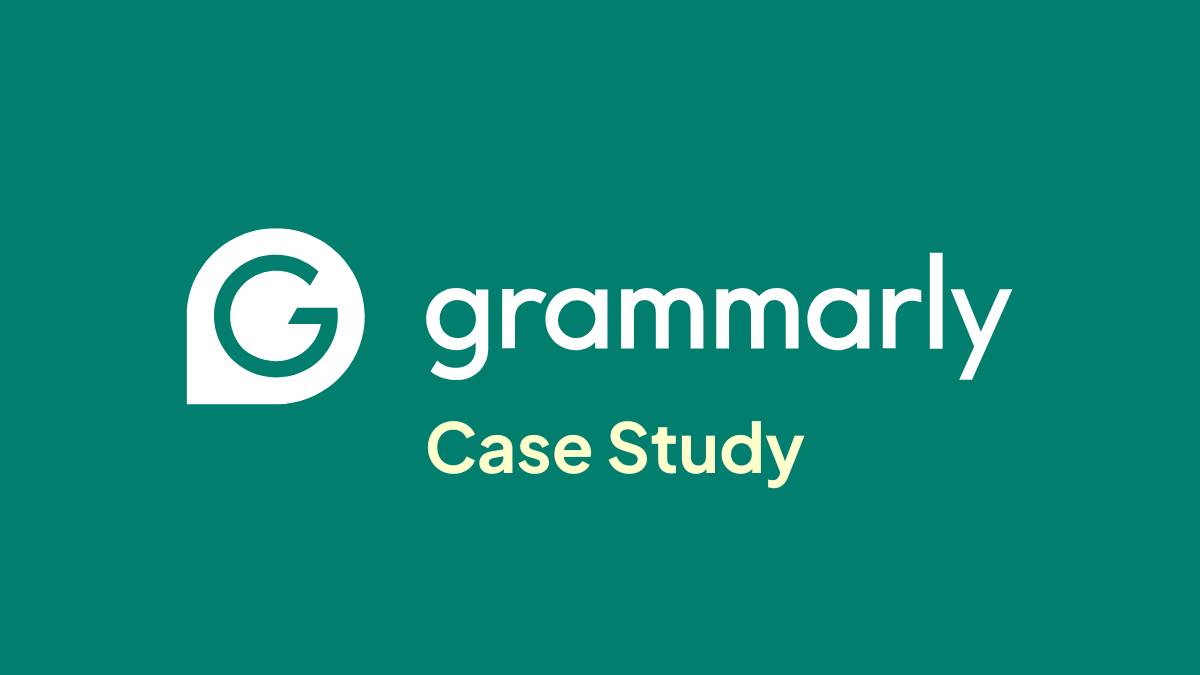Table of Contents
Introduction to Grammarly Case Study
Grammarly is one of the leading writing assistant tools, helping millions of users enhance clarity, grammar, and style in their writing. From casual writers to enterprise teams, it offers a mix of AI-powered editing, tone suggestions, and workflow integration.
In today’s SaaS landscape, performance marketing and precise audience targeting are critical. Companies that combine data-driven campaigns with measurable outcomes can scale faster and more efficiently. Grammarly is a prime example of this approach, using performance marketing to drive user growth, enterprise adoption, and measurable ROI.
This case study dives into Grammarly’s marketing strategy, adoption across enterprise clients, and the business impact verified through official case studies.
Grammarly’s Growth Through Performance Marketing
1. What is Performance Marketing?
Performance marketing is all about accountability. Unlike traditional marketing, where results can be vague, performance marketing ties every campaign to specific, measurable outcomes like clicks, conversions, or sales. For SaaS companies like Grammarly, it means:
- Targeting high-intent users with precision.
- Continuously optimizing campaigns based on real data.
- Linking marketing spend directly to business impact.
2. Grammarly + Microsoft Advertising Collaboration
Grammarly worked with Microsoft Advertising to focus on the people who actually use and create content, what they call “prosumers.” It wasn’t about spreading ads everywhere. The goal was to reach the right users, in the right place, at the right time.
They used insights from LinkedIn, Outlook, and Bing to figure out where attention was highest. Not every campaign was perfect. Some needed tweaking. That’s where recurring lift studies came in. They kept track of engagement, awareness, and conversions across the funnel.
With every campaign, adjustments were made. Some messages worked better than others. Some channels performed differently. The key was staying flexible and always learning from the data. That constant feedback loop kept campaigns efficient and effective.
It’s a simple idea. Focus on your audience, measure carefully, and refine often. That’s how you make marketing actually work.
Also Read: Old Spice Case Study
Grammarly’s Performance Marketing
Grammarly’s marketing isn’t about blasting ads everywhere. It’s precise, targeted, and backed by data. The focus is on “prosumers”, people who write, read, and create content regularly. These users care about quality, efficiency, and tools that actually help them. Grammarly’s campaigns are built around understanding what this audience wants and where they spend their time.
The partnership with Microsoft Advertising was a turning point. They implemented an audience-first, data-driven strategy that made every dollar count. Insights from LinkedIn, Outlook, and Bing helped identify where attention was high, making campaigns more effective. The results speak for themselves (Source):
- 42% lift in search activity directly from targeted campaigns.
- 73% increase in conversions, showing the audience responded.
- 33% more site visits, proving relevance and interest.
- 23% drop in cost per acquisition, demonstrating efficiency even as scale increased.
Campaigns weren’t left on autopilot. Grammarly ran recurring lift studies to measure brand awareness, engagement, and conversion rates across the funnel. Each campaign was tweaked based on real data, creating a loop of continuous improvement.

Apply Now: AI-Powered Performance Marketing Course
Enterprise Adoption
Performance marketing alone wasn’t the full story. Grammarly’s tools needed to prove real business impact for enterprises, and official sources confirm they did:
Frost & Sullivan:
- 66% reduction in editing time.
- 500+ extra projects completed annually.
- 17M+ words analyzed for readability and clarity.
- Project completion rates doubled without losing quality.
Databricks:
- $1.4M annual savings after Grammarly adoption (Source).
- 1994% ROI, demonstrating tangible value.
- 10–15% more support cases resolved, improving operational efficiency.
OSV:
- Over 90% employee adoption, reflecting ease of use and integration (Source).
- 3.3% lift in customer satisfaction, showing improved communication.
- Generative AI features helped employees create content faster and clearer.
What Makes It Work
Grammarly’s marketing success comes from a combination of:
- Audience Segmentation & Targeted Campaigns: Each placement is deliberate, reaching high-intent users.
- AI-Powered Tools That Deliver Value: The product itself reinforces the brand promise.
- Measurement & Optimization: Lift studies and metrics guide decisions. Nothing is left to guesswork.
- Direct Business Impact: Conversions rise, costs drop, and enterprise teams become more productive.
In short, Grammarly mixes smart targeting, measurable campaigns, and practical tools. It’s a system that works at both consumer and enterprise levels. The lessons are clear: know your audience, measure everything, and iterate constantly.
Also Read: Nvidia Case Study
Key Components of Grammarly’s Marketing Strategy
Grammarly didn’t get to where it is by accident. Their marketing has a clear structure, but it’s also flexible enough to adjust when needed. There are a few things they focus on that really make a difference.
1. Audience Segmentation & Targeted Campaigns
They don’t treat everyone the same. Prosumer users, enterprise teams, they each get slightly different messaging. Ads aren’t just thrown out there. LinkedIn, Outlook, Bing, every placement has a purpose. Each message feels relevant, and it shows. People respond.
2. AI-Powered Writing and Editing Tools
Their product itself helps market it. When people see the platform in action, grammar checks, tone suggestions, and workflow integrations, they immediately understand the value. It’s not just marketing hype. It’s real utility, which makes adoption easier, especially in enterprise setups.
3. Measuring Direct Business Impact
Campaigns aren’t just about impressions or clicks. Grammarly tracks conversions, site visits, efficiency metrics, and even cost per acquisition. Every number matters because it shows what’s working and what isn’t. No guesswork.
4. Optimization Through Recurring Lift Studies & Deep Insights
One-off campaigns aren’t enough. They run recurring lift studies to see what actually moves the needle. Awareness, engagement, conversions, everything gets measured. Then they adjust campaigns, refine targeting, and tweak messages. Little changes, repeated often, make a big difference over time.
It all adds up. Clear focus on audience, a strong product story, direct measurement, and constant iteration. That’s the cycle that keeps growth going.
Lessons from Grammarly Case Study
Grammarly’s story isn’t just interesting; it’s full of practical lessons for any SaaS company looking to grow.
1. Use Performance Marketing Wisely
Campaigns should be tied to real results. High-intent users respond better when messaging is tailored. You get lifts in conversions, more visits, and better engagement. It works.
2. Data Should Drive Decisions
Recurring lift studies and audience insights aren’t just numbers on a chart. They show what’s actually happening. Adjustments based on these insights lead to smarter campaigns and better ROI. Keep measuring. Keep learning.
3. Tools That Improve Work Matter
Grammarly isn’t just about grammar. The platform helps teams save time, improve clarity, and communicate better. Enterprises see faster project completion and higher quality work. Tools that make a real difference stick.
4. Show Enterprise Impact Clearly
It’s one thing to get users. Another thing to show measurable results. Project completion rates, words analyzed, cost savings, support cases resolved; these numbers prove value. They justify continued adoption.
The big picture? Understand your audience, measure everything, iterate constantly, and provide tools that truly help. That mix drives growth for individuals and enterprises alike.
Also Read: Adobe Photoshop Express Case Study
Conclusion
Grammarly’s story shows what happens when marketing meets measurement. Campaigns targeting prosumers drove a 42% lift in search activity, 73% more conversions, 33% higher site visits, and 23% lower CPA (Source). That’s real, measurable impact.
Enterprise adoption tells a similar story. Frost & Sullivan cut editing time by 66%, handled 500+ extra projects, and analyzed 17 million+ words with Grammarly. Databricks saw $1.4M annual savings and a 1994% ROI, while OSV achieved over 90% employee adoption and a 3.3% boost in customer satisfaction. Numbers like these don’t just impress, they prove value.
What stands out is the mix: data-driven performance marketing, continuous measurement, and tools that actually improve work. That’s the approach other SaaS or enterprise teams can learn from. Focus on the right audience, track results, and make small improvements over time. It works, and it scales.
FAQ: Grammarly Case Study
Q1. What makes Grammarly’s marketing so effective?
It works because they focus on the right people. Prosumers, those who write and create content constantly. Then they watch what happens. Not guessing. Adjust. Repeat. Simple, but it sticks.
Q2. Any real numbers to show this works?
Yes. They saw a 42% lift in search activity, 73% more conversions, 33% extra site visits, and a 23% drop in CPA. Numbers like that don’t lie. Makes the strategy easy to justify.
Q3. Who exactly do they target?
People who write, read, and create content daily. Prosumers. They care about quality. Grammarly shows up where they spend time. That’s it. No fluff, just relevance.
Q4. How do they know it’s working?
They measure everything. Recurring lift studies track clicks, conversions, and brand awareness. If something’s off, they tweak it. Constant loop. It keeps campaigns sharp.
Q5. How does AI play a role?
AI helps improve workflow and content quality. Not fancy for the sake of it. It just makes writing faster, clearer, and easier. That alone keeps users coming back.
Q6. Can other businesses do the same?
Yes. Focus on the right audience. Test, measure, adjust. Use tools that actually help. Small steps, done consistently, add up. Growth isn’t magic. It’s work done smart.

